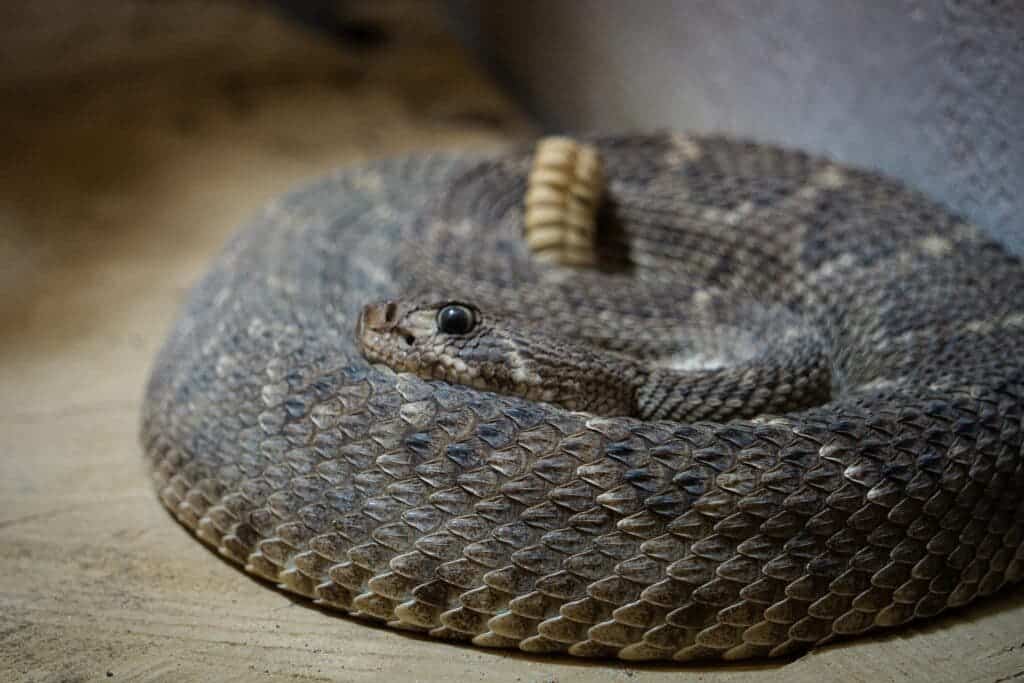The rattling of rattlesnakes isn’t as simple a warning as we assumed. New research explains that this sound is subtly modulated to change the listener’s perception of its source, making it seem the snake is closer than it actually is.

Rattlesnakes are quite famous for the warning sounds they produce with their tails, the iconic ‘rattling’ that gives them their name. Far from being a simple wagging of the tail, however, new research suggests that this rattling is a fine-tuned intimidation tool. As the snake rattles its tail, it makes an abrupt shift to a high-frequency mode, the team explains. This makes listeners perceive the source of sound as being closer than it actually is.
In effect, while definitely being deadly, rattlesnakes also engage in some strategic deception.
Rattle my bones
“Our data show that the acoustic display of rattlesnakes, which has been interpreted for decades as a simple acoustic warning signal about the presence of the snake, is in fact a far more intricate interspecies communication signal,” says senior author Boris Chagnaud at Karl-Franzens-University Graz. “The sudden switch to the high-frequency mode acts as a smart signal fooling the listener about its actual distance to the sound source. The misinterpretation of distance by the listener thereby creates a distance safety margin.”
Past studies have shown that rattlesnakes’ rattles vary in frequency, but they didn’t give us any insight into why they do, or what this behavior actually achieves in the real world.
The hypothesis behind this paper was born while Chagnaud was visiting an animal facility and noticed that rattlesnakes increased the frequency of their rattling as someone approached the snakes — but decreased when they walked away. From this observation, Chagnaud and his team developed an experiment in which objects appeared to move towards rattlesnakes. One of these objects was a human-like torso, and another was a looming black disk. The illusion of forward-back movement was created by making the objects increase or decrease in size.
The team reports that over the course of this experiment, as potential threats approached the snakes, they would increase the frequency they rattled at to approximately 40 Hz. But, abruptly, they would switch to an even higher frequency range, between 60 and 100 Hz.
Further experimentation revealed that rattlesnakes adapt their rattling frequency to the (perceived) approach velocity of an object, rather than its size.
“In real life, rattlesnakes make use of additional vibrational and infrared signals to detect approaching mammals, so we would expect the rattling responses to be even more robust,” Chagnaud says.
Inside a virtual reality environment, the team then tested how this shift in rattling frequency is perceived by a person or animal close to the snake. A group of 11 participants were asked to engage in a simulated walk inside the virtual environment — a grassland — and told they’ll be walking towards a snake. Its rattling rate increased as the participants closed in, as per the previous findings, and suddenly raised it to 70 Hz at a virtual distance of 4 meters.
The participants were asked to tell the team when the rattling sounded like it came from only 1 meter away. All the participants underestimated the distance that the virtual snake was at after it increased its rattling frequency.
“Snakes do not just rattle to advertise their presence, but they evolved an innovative solution: a sonic distance warning device similar to the one included in cars while driving backwards,” Chagnaud says. “Evolution is a random process, and what we might interpret from today’s perspective as elegant design is in fact the outcome of thousands of trials of snakes encountering large mammals. The snake rattling co-evolved with mammalian auditory perception by trial and error, leaving those snakes that were best able to avoid being stepped on.”
The paper “Frequency modulation of rattlesnake acoustic display affects acoustic distance perception in humans” has been published in the journal Current Biology.









